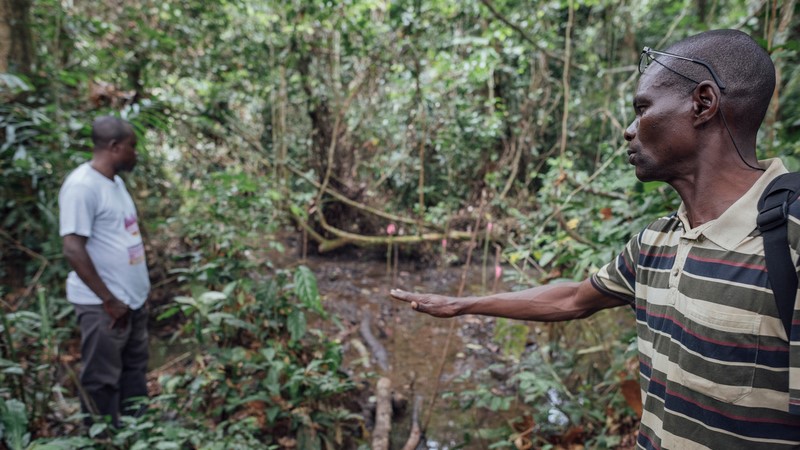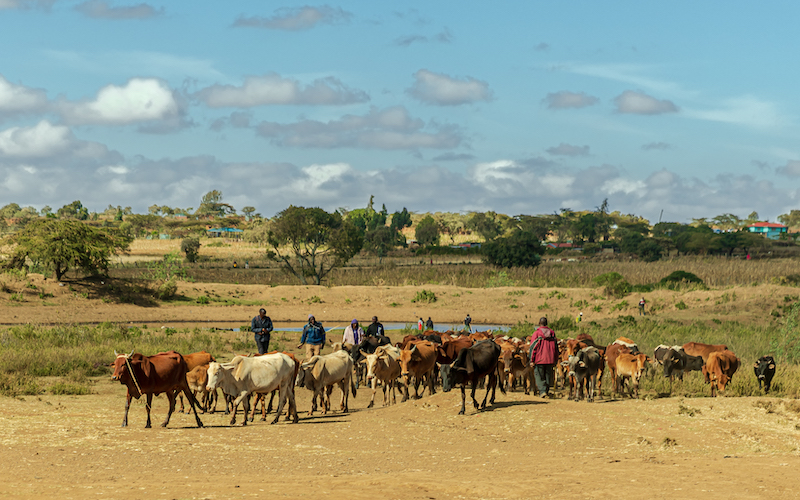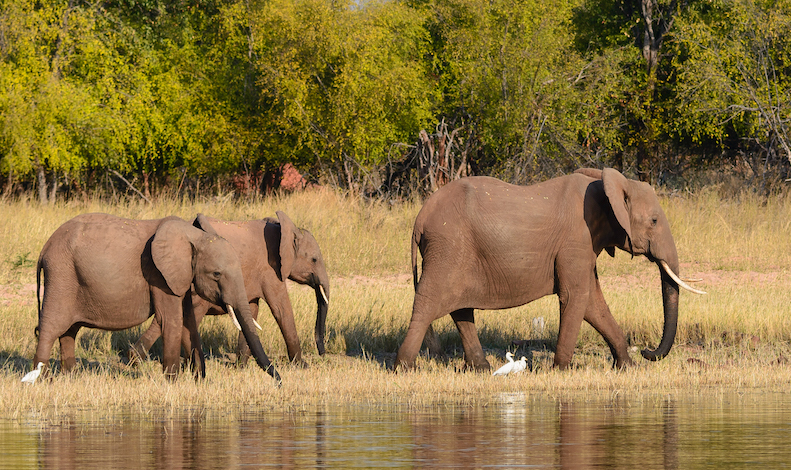Verra picked a controversial carbon credit verifier to review its new forest offset rules and critics say the changes don’t fix the problem.

Corneille Ewango, a Congo forest expert from the University of Kinsangani, DRC, carries scientific research at the peatlands (Photo: Kevin McElvaney/Greenpeace)
The world’s leading carbon credits certifier has drawn up new rules for its much-criticised forest protection programmes.
Verra says the new methodology will ensure that the programmes are actually protecting as many trees as those buying and selling the carbon credits they produce claim.
But experts told Climate Home that the new rules will not fix the conflicts of interest which undermine these programmes and that the way Verra is carrying out its review of the rules is flawed.
Forest offsets
Carbon credits are when companies, governments and people pay for someone else to cut greenhouse gas emissions on their behalf, so they can take credit for this climate action.
Organisations like Verra are supposed to check whether projects actually reduce the amount of emissions that they claim.
Germany promises €2bn to global Green Climate Fund
Projects which aim to reduce emissions by saving forests, allowing them to keep sucking in planet-destroying carbon dioxide, make up much of Verra’s credits portfolio.
Project developers estimate what would have happened if the conservation project had not existed. The ‘avoided’ emissions are then turned into credits to be sold to polluters. Verra approves the projects and advertises them for sale on its website, receiving a fee for each transaction.
Under fire
But in January, a Guardian investigation alleged in January that more than 90% of its rainforest offset credits are likely to be ‘phantom credits’ and do not represent genuine carbon reductions.
It found that most projects overstated the threats to forests which calculations are based on and did not show real evidence that they had saved the forest.
Revealed: How Shell cashed in on dubious carbon offsets from Chinese rice paddies
Verra disputed the investigation’s findings and said it was already working to transition all forest projects to one updated methodology.
More than three years in the works, Verra finally unveiled its draft rules in mid-April. They are expected to be finalised by the end of the year, before coming into force in 2025.
Controversial pick
After drawing up the rules, Verra sent them to an independent auditor called Aster Global Environmental Solutions to review.
Aster is a family firm from rural Ohio which makes its money auditing carbon offset projects and consulting for the industry.
As an auditor, its job is to asses whether projects follow Verra’s rules and are likely to achieve the emissions reductions they claim. After they’ve marked the project developer’s homework, Verra gives the final seal of approval.
What is the global stocktake of climate action and why does it matter?
Simon Counsell, who has been assessing offsets for 15 years, says auditors are hugely influential. “In many respects, the quality of the carbon credits depends on the rigour of their work,” he said.
But Aster has come under fire for a series of projects recently. It’s accused of approving a grassland conservation project which harms indigenous cattle herders in Kenya and forest protection projects which over-count emissions reductions in Zimbabwe and Peru.
Indigenous herders disrupted
Aster approved the Northern Kenya Grassland Carbon project, which claims to increase the amount of carbon stored in the soil of savanna grasslands by managing the grazing patterns of livestock.
The carbon credits from the project were sold to the likes of Netflix, Facebook owner Meta and the Natwest bank.

Indigenous cattle herders in Kenya’s countryside. Photo: Ninara/Flickr
But the Survival International campaign group claim the project is breaking down long-standing Indigenous herding systems without their informed consent and cannot accurately account for how much carbon it is removing from the atmosphere.
The group also took issue with the work of Aster Global as a validator and verifier. “Far from having undergone ‘rigorous’ assessment, numerous fundamental problems with the project were not properly addressed during its validation and the subsequent verification,” it said.
Cop28 head backs fossil phase-out with carbon capture caveat
Counsell carried out Survival International’s analysis of the project. He said Aster was “clearly troubled” by what they saw as it raised a large number of concerns with the developers during the assessment.
“The troubling part is that they never received convincing responses and yet still approved the validation”, Counsell added. “This raises questions about their rigour.”
Aster has not responded to a request for comments.
Mixed messages
In March, Verra suspended the Northern Kenya project while it carries out a review to “investigate claims” that the project does not comply with the rules.
If it identifies any irregularities – Verra says – it will require Aster to explain the cause for any quality control issues.
Verra will review the response and “reserves the right to take action” against the body, a spokesperson told Climate Home.
Cop28 boss slams rich nations “dismal” $100bn finance failure
But Verra, who appointed Aster to review their methodology shortly after they suspended the Kenyan project, said it would be premature to blame Aster for the project’s review.
Counsell commented: “You’d think [Verra] would at least wait until they conclude their analysis of what went wrong with the Kenyan project before putting [Aster] in charge of this really important work”.
Verra says Aster is a very experienced auditor and its proposal for the methodology review “demonstrated the best quality”.
Over-counting
Aster has also approved projects which stand accused of over-counting. When offset seller South Pole claimed to have saved an area of forest in Zimbabwe the size of Puerto Rico, Aster verified that claim for the Verra registry.

Elephants on the edge of Lake Kariba in Zimbabwe. This area comprises a forest protection project that has been accused of exaggerating its climate benefits. Photo: Vince O’Sullivan
But separate reports by Bloomberg and carbon rating firms found that the Kariba project had wildly overstated the risk of mass deforestation its calculations were based on.
South Pole denied this but voluntarily suspended the sale of some of the offsets. Verra said the baseline validated by Aster Global for the Kariba project was “in conformance with VCS Standard and reflected the data available at that time”.
Aster also verified forest protection credits in the Peruvian Andes which were later questioned by an Associated Press investigation. An Aster review found nothing wrong with the project.
Baselines are key
The baseline is a key component of carbon credits as it describes what would happen if the project did not exist and therefore how much difference the project makes.
It is one of the most contested elements of Verra’s forest offsets.
Exxon scrambles to save investments before Colombia bans fracking
Carbon rating firm Calyx Global estimated almost two-thirds of forest offset projects have a high risk of an overestimated baseline, leading to tens of millions of worthless credits and more pollution.
Elias Ayrey, chief scientist at carbon ratings firm Renoster, puts this down to many project developers’ “manipulating” data and maps showing where deforestation has occurred and is likely to occur in the future.
Verra’s remedy
Under its new rules, Verra proposes to fix this by guessing how much of the forests could be destroyed in every region and setting a cap on the total amount of emission reductions that developers can claim.
Then they split that cap up among individual projects in that region based on risk maps.
Ayrey believes the new methodology brings some welcome changes, but ultimately “is not going to significantly improve the market”.
The problem – he says – remains that the maps can continue to be made by “biased” parties, including project developers. The only difference is that, in future, they would need a sign-off from a state official.
Several analysts believe the only way to ensure the integrity of the system is to have baselines set by truly independent third parties.
“As long as these maps are not made by peer-reviewed scientists at academic institutions, like Nasa, we are going to keep having this problem”, says Ayrey.



